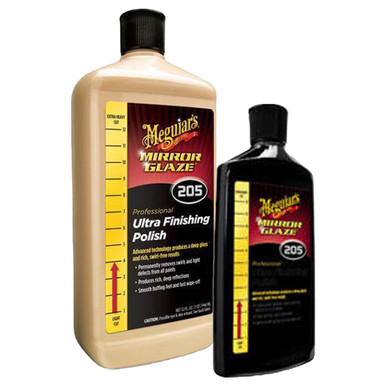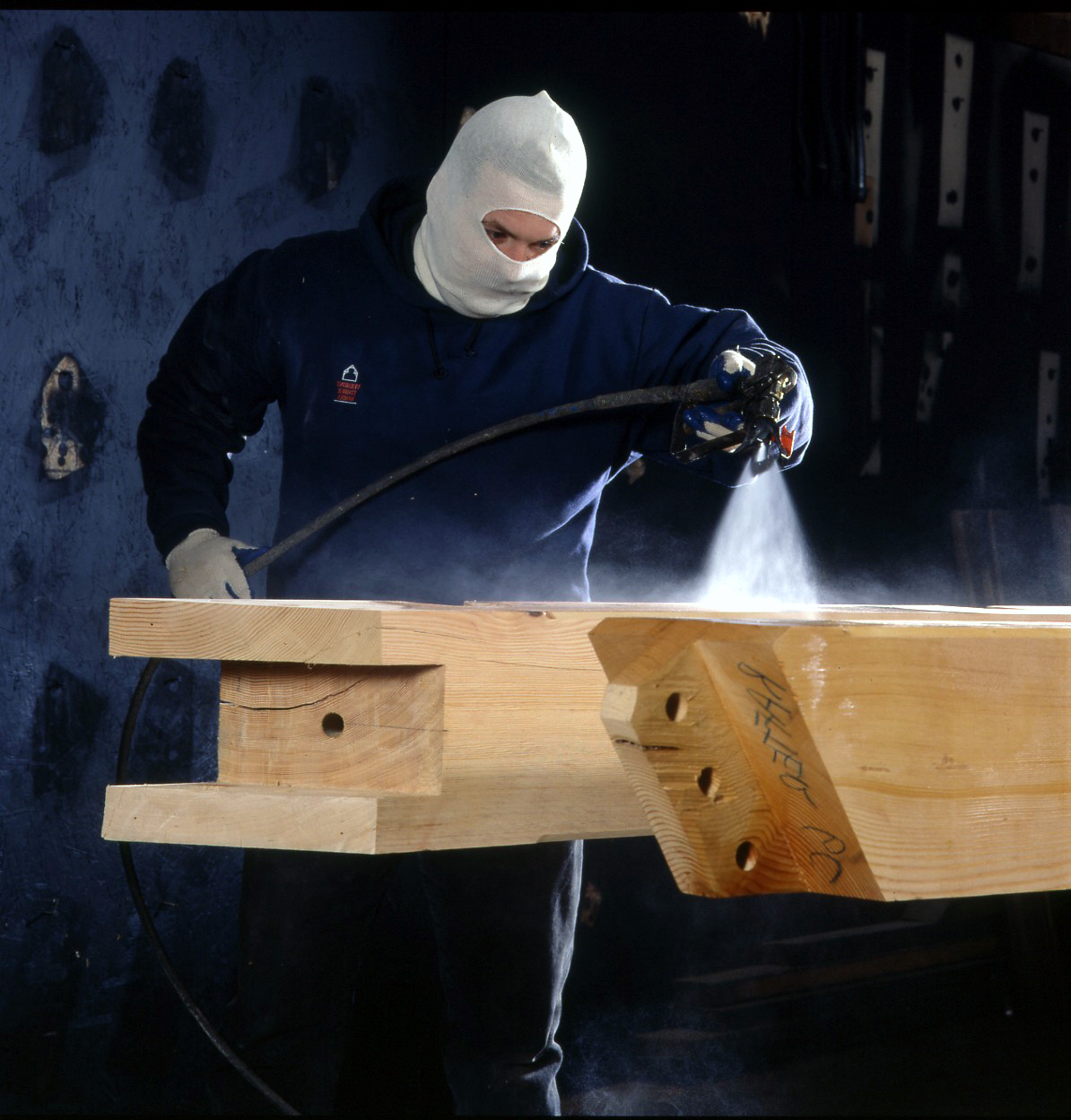Well I read this thread (again) from diyaudio.com
and it got me motivated to try it (again).
A little background. I used to paint for a commercial painting company, but only walls/woodwork/exteriors. I have used an airless sprayer, but never an HVLP for automotive type applications. I bought my hvlp sprayer a few months ago, and used it to paint some flat black on a sub I built. That is about the extent of my HVLP spraying experience. I also attempted to go through this process once before when I built my Modula MTs. I never achieved the gloss black, for a couple main reasons. What I thought was the main issue was that I didn't have the right rubbing compound. I bought what I could find at my local store, and started having a go at it. Well it worked to some degree--but never got glossy. I finally gave up and called it good enough for now (I still had to do the cutouts on the baffles, and knew I would mark them up and would do final finishing later) What I realized last night while I was reading is that I made a more critical mistake. I didn't read all the instructions (typical male) and just looked at his picture. Said, huh, looks like gloss black paint, wet sand it down, rubbing compound, fine cutting polish, voila! What I neglected to pick up on was that he had about 10 coats of clear laquer (or similar) over the black paint. That was my AHA! moment for the day, because I just put about 8 coats of paint on and tried to polish that. Hence this addiitional attempt.
Part of the problem I had before is that the products he mentions using are from the UK. I want to find some products that are generally available in the US. I will be doing my first attempts on a test piece of MDF, until I have a method/products that provide a finish I desire. I don't plan on creating my own method--basically following what was done in the above referenced thread. I will try to give a step by step description and photos of what I did.
My first test is going to be attempted with all water based products. I have no idea if they will work, but if they do, I will love the fact that I am not having to use thinner to clean the gun out.
The tools I am using right now for this:
Compress: Porter Cable Pancake Compressor CFFN250N
HVLP Sprayer: Coleman Powermate 010-0013CT
Filter/Regulator: Puma AP2121FR (between the compressor and gun)

The pressure on the compressor is set to 95-100 (typical nail-gun range) and the regulator hooked up by the sprayer is set to output 30 psi.
I am spraying on a small piece of MDF, and right now am using this product:
Glidden Gripper Grey Primer--available at Home Depot.
I didn't sand the MDF or anything before painting. It is just a cutoff from my last speaker project.

So far I sprayed 4 coats of primer (thinned) about 20 minutes apart. The can says wait an hour, but since it is going on so thin, I disregarded this.
I lightly dry sanded the primer after 4 coats. I could still see the lines in the primer (sort of like wood grain--I'll call it MDF grain). I have sprayed 2 more coats and it looks like the MDF grain is pretty much gone. Orange peel texture doesn't look too bad--that seems more related to the variables on the gun than anything else (proper thinning, air pressure, material content).
Pic of the grey primer--I actually didn't get rid of the mdf graining as much as I hoped. If you look closely, you can see the horizontal lines.

I am going to spray another coat, and head to dinner. After dinner I will sand the primer, and start putting on a few color coats.
Anyone feel free to chime in here with suggestions/experiences/criticisms. I am hoping for this to be a resource for others to use. I will probably also post a link to this thread on AVS.
and it got me motivated to try it (again).
A little background. I used to paint for a commercial painting company, but only walls/woodwork/exteriors. I have used an airless sprayer, but never an HVLP for automotive type applications. I bought my hvlp sprayer a few months ago, and used it to paint some flat black on a sub I built. That is about the extent of my HVLP spraying experience. I also attempted to go through this process once before when I built my Modula MTs. I never achieved the gloss black, for a couple main reasons. What I thought was the main issue was that I didn't have the right rubbing compound. I bought what I could find at my local store, and started having a go at it. Well it worked to some degree--but never got glossy. I finally gave up and called it good enough for now (I still had to do the cutouts on the baffles, and knew I would mark them up and would do final finishing later) What I realized last night while I was reading is that I made a more critical mistake. I didn't read all the instructions (typical male) and just looked at his picture. Said, huh, looks like gloss black paint, wet sand it down, rubbing compound, fine cutting polish, voila! What I neglected to pick up on was that he had about 10 coats of clear laquer (or similar) over the black paint. That was my AHA! moment for the day, because I just put about 8 coats of paint on and tried to polish that. Hence this addiitional attempt.
Part of the problem I had before is that the products he mentions using are from the UK. I want to find some products that are generally available in the US. I will be doing my first attempts on a test piece of MDF, until I have a method/products that provide a finish I desire. I don't plan on creating my own method--basically following what was done in the above referenced thread. I will try to give a step by step description and photos of what I did.
My first test is going to be attempted with all water based products. I have no idea if they will work, but if they do, I will love the fact that I am not having to use thinner to clean the gun out.
The tools I am using right now for this:
Compress: Porter Cable Pancake Compressor CFFN250N
HVLP Sprayer: Coleman Powermate 010-0013CT
Filter/Regulator: Puma AP2121FR (between the compressor and gun)
The pressure on the compressor is set to 95-100 (typical nail-gun range) and the regulator hooked up by the sprayer is set to output 30 psi.
I am spraying on a small piece of MDF, and right now am using this product:
Glidden Gripper Grey Primer--available at Home Depot.
I didn't sand the MDF or anything before painting. It is just a cutoff from my last speaker project.
So far I sprayed 4 coats of primer (thinned) about 20 minutes apart. The can says wait an hour, but since it is going on so thin, I disregarded this.
I lightly dry sanded the primer after 4 coats. I could still see the lines in the primer (sort of like wood grain--I'll call it MDF grain). I have sprayed 2 more coats and it looks like the MDF grain is pretty much gone. Orange peel texture doesn't look too bad--that seems more related to the variables on the gun than anything else (proper thinning, air pressure, material content).
Pic of the grey primer--I actually didn't get rid of the mdf graining as much as I hoped. If you look closely, you can see the horizontal lines.
I am going to spray another coat, and head to dinner. After dinner I will sand the primer, and start putting on a few color coats.
Anyone feel free to chime in here with suggestions/experiences/criticisms. I am hoping for this to be a resource for others to use. I will probably also post a link to this thread on AVS.


 Whatever speakers I build from here out are going to have to be living room friendly.
Whatever speakers I build from here out are going to have to be living room friendly.



 ops:
ops: 
 )
)
Comment